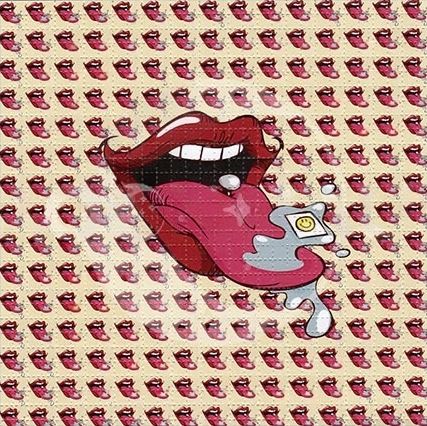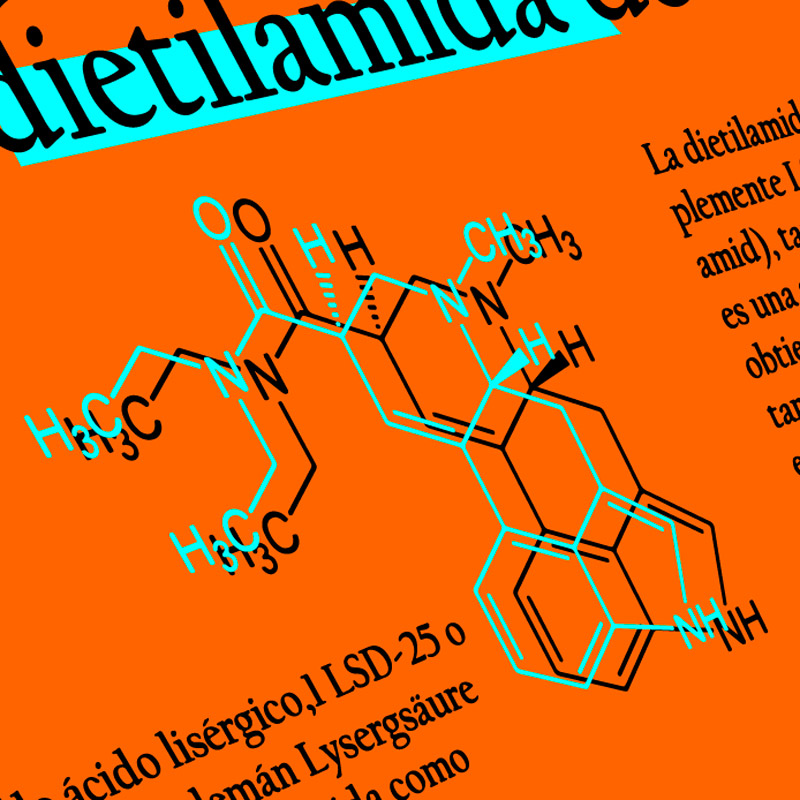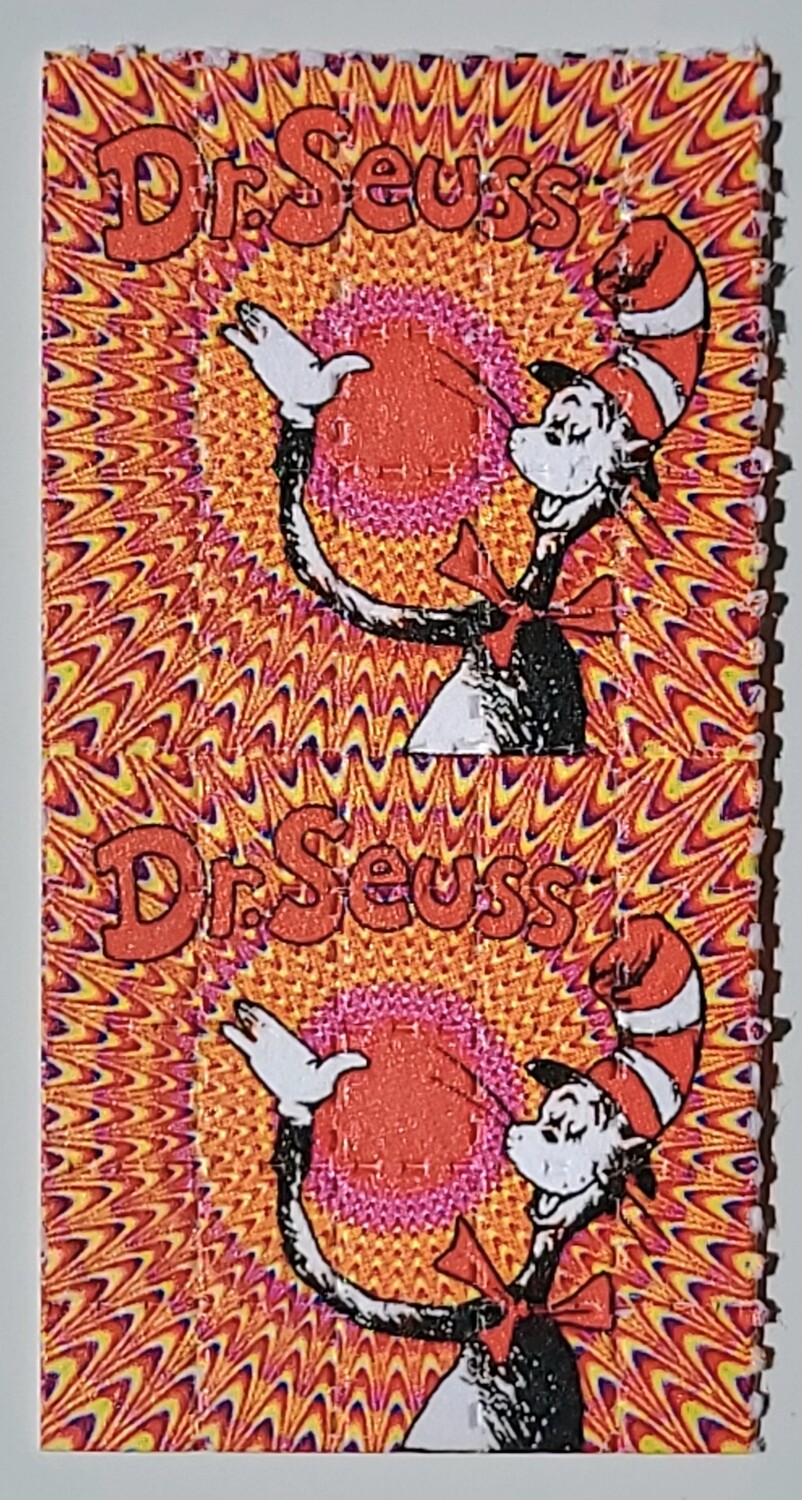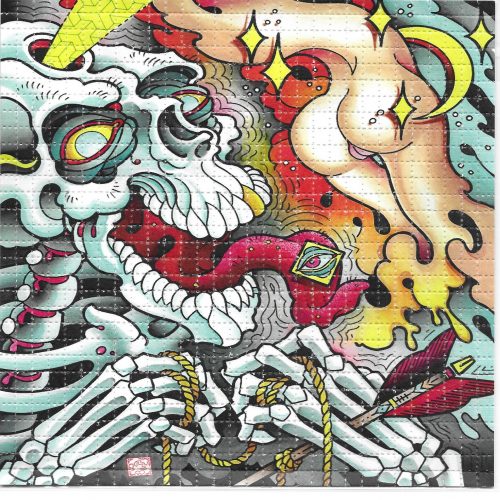
Everybody’s experience with LSD is unique, so it’s impossible to say exactly how it’s going to feel for you when you take it.
With that said, there are some common experiences present in what can be considered a classic acid experience — such as visual and auditory distortions, feelings of euphoria and connection, tingling sensation in the skin, or the sudden emergence of new insights and inspiration.
What is Acid & What Does it Do?
Lysergic acid diethylamide (LSD) is a hallucinogenic discovered by Albert Hofmann in 1938. It gained popularity in the 1960s as part of the counterculture movement, becoming the psychoactive of choice for people looking to expand their minds amid strong social tensions between generations and a highly controversial war in Vietnam.
LSD works by mimicking serotonin in the brain. It binds to the serotonin receptors to increase brain activity in some regions and decrease it in others.
The cumulative effects of LSD cause an increase in entropy (chaoticness or randomness) in the brain. This allows thoughts to bubble up from inaccessible parts of the psyche and causes an exaggeration of sensory stimuli.
The effects of LSD begin 30-60 minutes after ingestion and last for around 10 hours.

The effects of LSD is highly dependent on the dose. The small microdoses being used by workplace professionals on a daily basis is entirely different from a Saturday afternoon full-blown LSD trip.
Microdoses are used to enhance mental clarity — people report feeling more “awake” and clear-headed.
Larger, psychoactive doses produce powerful distortions in sensory perception, alterations in the perception of time, and dramatic changes in our ontological understanding of the universe and what it means to exist.
Keep in mind that doses of LSD are incredibly small and measured in micrograms. One microgram is a millionth of a gram, 1000 times smaller than one milligram.

Why Do the Effects of LSD Last So Long?
LSD has a strong affinity for the serotonin receptors in your brain — even more than the body’s natural serotonin. LSD binds to these receptors and holds on for several hours before eventually falling off and getting broken down.
The biological half-life of LSD is around five hours, meaning it takes about five hours for 50% of your dose to be eliminated from your bloodstream.
However, peak concentration in plasma occurs around 3–4 hours after ingestion, which matches when most people feel the strongest effects.

Are the Effects of LSD Stronger Than Other Psychedelics?
LSD is regarded as one of the strongest psychedelic in terms of dose. It’s one of the few psychedelics that exert psychoactive effects at sub-milligram doses (about 0.2 mg). To put it into perspective, the standard psychoactive dose of psilocybin (the active ingredient in magic mushrooms) is around 20 mg, and the psychoactive dose of DMT (dimethyltryptamine) is closer to 40 mg (smoked or vaped).
Wrapping Up: What Does Acid Feel Like?
LSD is a potent and common psychedelic. Every LSD experience is unique from the last. Every person experiences it differently, and every session is different, even among the same individual.
LSD expands whatever you’re feeling going into the trip, so the best way to ensure a positive experience is to make an effort to get into the right headspace before you start. Meditate, go for a walk, spend time with people you love and trust, etc.
The LSD experience involves visual and auditory distortions, which are different from a true hallucination because it involves an exaggeration or distortion in the sounds and sights you’re experiencing. You won’t see a giant pink elephant or anything like that, but you may see the patterns from grandmas plaid couch creeping up the side of your friend’s leg.
An LSD trip usually lasts for around ten hours from the initial dose to when you stop feeling any effects. Make sure to plan your trip accordingly and leave yourself enough time to contemplate your experience once it’s over.






